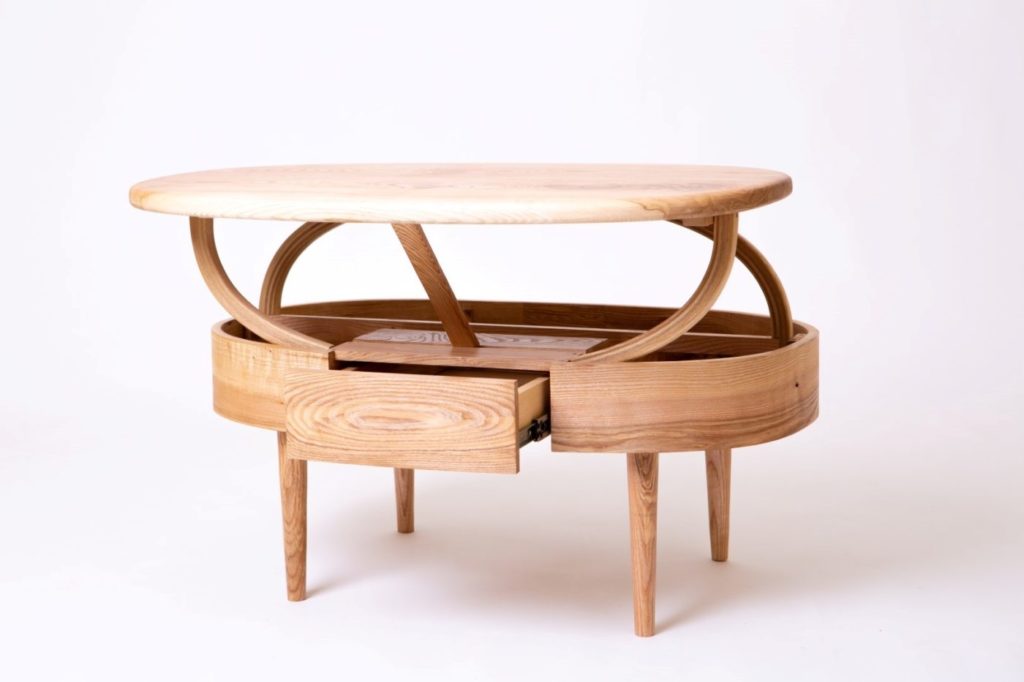A new year doesn’t always bring with it new trends, but January does provide an ideal time to look at and consider the shifts and swings of what’s ‘current’ in the woodworking world.
Trends are by no means prescriptive at the Chippendale School, where every student is encouraged to find their own signature style – however, it can be fun and informative to look at what is in vogue for a dose of fresh inspiration.
With this in mind, School Principal Tom Fraser has examined the woodworking trends that look set to stick around in 2023.
Multifunctional furniture
Furniture has had to work hard in the past few years, with people staying at home for increased periods of time. This trend towards multi-functionality will remain popular as many people continue to work from home or work flexibly.
Plus, ongoing housing market changes mean people might be either downsizing or staying put in their current home. So, while spaces may stay the same size or get smaller, furniture needs to be as flexible as possible to accommodate the changing needs of the household – whether that’s a growing family or working from home.

Buying bespoke = buying better
Across the design world, we are seeing a shift as people focus on quality, not quantity – whether that’s ditching fast-fashion or shunning Ikea in favour of designs that will stand the test of time (and taste!).
Buying furniture from independent furniture makers is more sustainable, longer lasting, and has the added benefit of supporting small businesses in a challenging retail climate.

Sustainability
Tying into the above trend, sustainability remains key for consumers – people want to know the eco-credentials of what they are buying. Increasingly switched-on consumers can spot greenwashing from a mile away, so make sure any sustainability claims are the real deal!
Sustainability is a core value of the Chippendale School, and is something we ingrain into our students – from sourcing wood sustainably to restoring furniture.
Warm woods
Paired with earthy, grounding natural tones, warm-hued woods will continue to be in demand. Gone are the cooler beiges and greys that have dominated design in the last few years, as we see a return to cosy spaces and a need for designs to be as comforting and comfortable as possible.

Hobby rooms
With more time spent at home, some consumers have converted offices into hobby rooms – like music rooms, crafting spaces or even a shed converted into a woodworking workshop!
These homemade spaces are great for mindfulness and helping us to get offline, being only a few steps away when you need them most. You can find out how to do just about anything on YouTube these days, so it’s no wonder people have taken creating their own hobby spaces into their own hands.
Nostalgic design
As seems to be the way when faced with challenging times (a looming recession, for example) nostalgic design is seeing a resurgence. Mid-century design has been increasingly popular for a few years now, but in recent months there has been a decisive trend for nostalgic design – whether a nod to the 60s, 70s or even the 90s.
We’ve seen the same trend crop up in our students’ designs – these are sophisticated takes on retro-inspired pieces.

Curve’s the word
Curvy designs will continue to be sought-after – whether an arched bookcase or a wiggly bench, pieces with curved elements are brilliant for softening spaces, adding interest and complimenting architectural accents. They also excellently contrast with angular pieces, drawing the eye to different parts of the room if placed correctly.
Bespoke kitchens
As more people seek to open up their existing spaces while making sure they have a kitchen that will work hard for them, people are looking to bespoke designs rather than off-the-shelf set ups.
With fewer house moves on the cards in the near future, people are spending more on their current spaces and that includes incorporating bespoke woodworking elements into their kitchens – such as unique shelving solutions, gorgeous worktops, and of course beautiful dining furniture sets.
—
While we prefer to set our own style standards rather than follow the herd, keeping a finger on the pulse of current trends in furniture making and cabinetry can be helpful – allowing us to reflect on our own practice and better understand what consumers want so that we, and our students, can successfully respond to that.
Interesting in pursuing woodworking and fine furniture making as a career? Find out more about our 2023/24 Professional Course here.